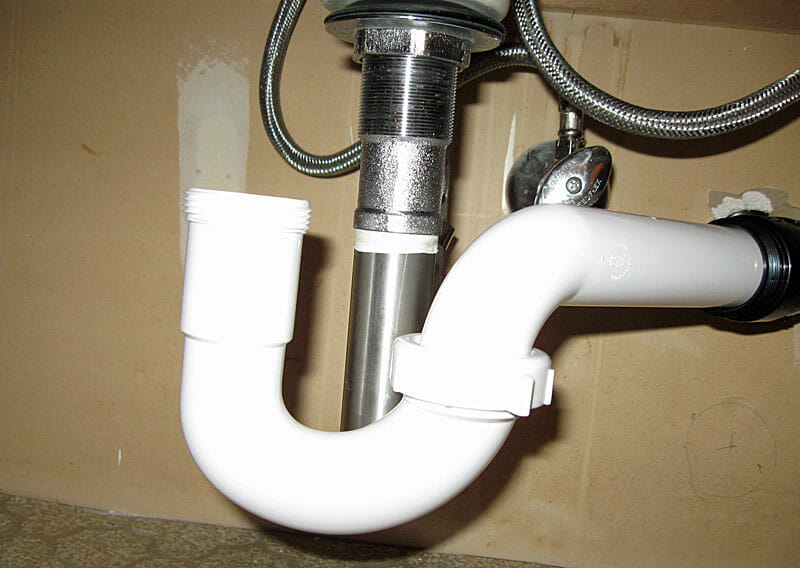Most of the
plumbing system in our homes is hidden in floors and ceilings or hidden behind walls. You may also have a crawl space or other area you rarely enter that also contains some of your plumbing system. One piece of your plumbing system that can be seen is the drain pipes under your sink, particularly the U-shaped pipe. Strangely, because it is so easy to see, you may not have given any thought to why it is there and what purpose it serves. The U-shaped pipe is actually called a P-trap, and it serves a vital function for your plumbing system.
The P-Trap Basics:
The P-Trap takes its name from its shape. It resembles a P when it is viewed on the side. It is in place to trap water when it has run through the drain pipe. The dip in the pipe allows water to rest and create a liquid plug to prevent sewer gas from escaping. Waste can decompose further down the line and could potentially create nasty smells in your kitchen or bathroom, but this liquid plug is usually sufficient to block it.
Problems With P-Traps:
As with any component of your plumbing system, your P-Trap is not immune to potential issues. One of the most common problems is a dried up P-Trap. This tends to occur if the sink has not been used for a prolonged period. For example, if you have a sink in your guest room, it may be weeks or months between uses. When this occurs, sewer gas can begin to escape from your waste water line and start to permeate into the room. This creates an unpleasant odor that may not have an immediately obvious source. Fortunately, this problem can be easily fixed, simply by running the faucet and allowing water to run down the drain. A minute of water running is usually sufficient to refill the trap and recreate this liquid plug.
P-Traps are also vulnerable to becoming clogged. The bend in the pipe can trap debris and items such as soap scum, hair, and grease. You may also find that small objects such as jewelry or toys end up trapped if they fall into the drain. This eventually leads to a clog developing that can block the drain. It may be possible to clear this type of clog with a simple plunger, but if you can’t seem to shift it, you will need to call in a professional plumber. Your plumber is likely to use a drain snake or hydro jetter to clear the clog. Your clog may even require that the P-Trap needs to be dismantled so that the blockage can be eliminated.
The P-Trap is a vital component of your plumbing system, and any issues are usually simple to correct. While it is tempting to try your hand at DIY, be sure to call in a
professional plumber. An experienced plumber is likely to have any problems resolved and ensure that your sink is back to working correctly in no time.
By Giovanni Longo President Flood Brothers Plumbing
Giovanni Longo is a 3rd generation master plumber who has been practicing his craft and trade in the greater Los Angeles area for well over a decade and a half. A plumbing and hydraulics-engineering innovator, Giovanni’s particular world-class expertise focuses on dealing with challenging sewer system designs as well as resolving complex commercial and residential draining issues. As a certified Flood Mitigation expert, he is also well versed in a wide variety of water damage and remediation solution.





